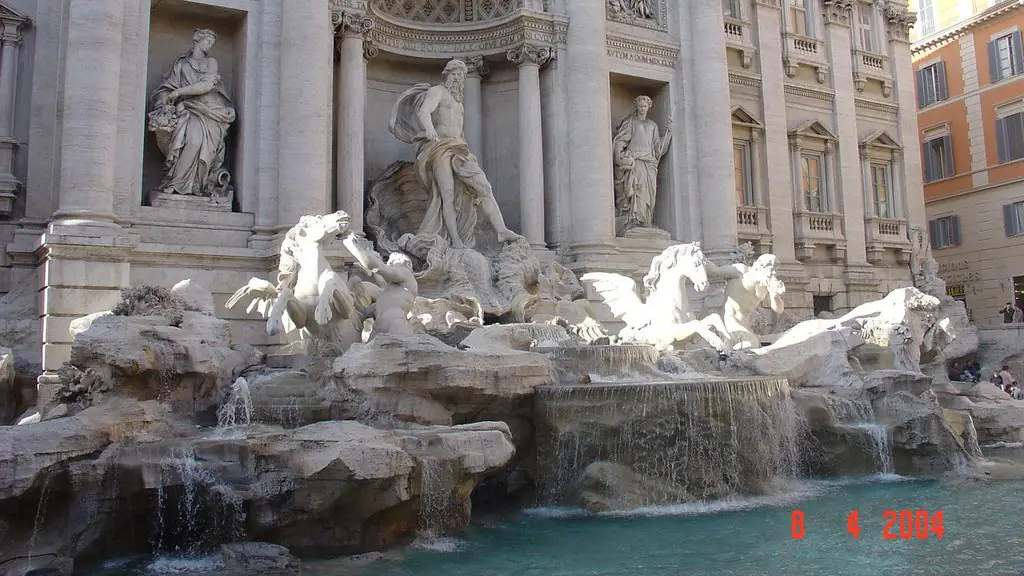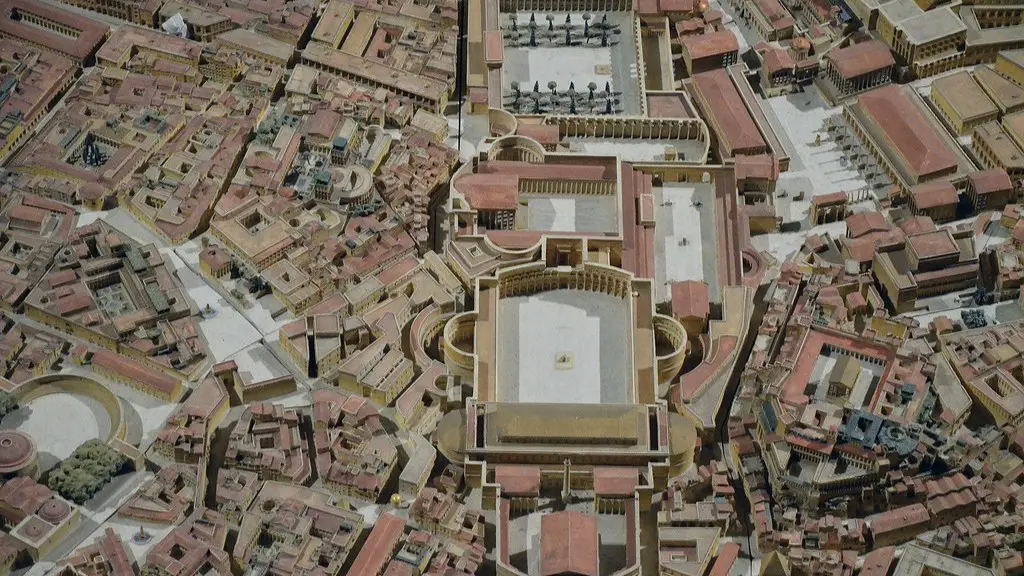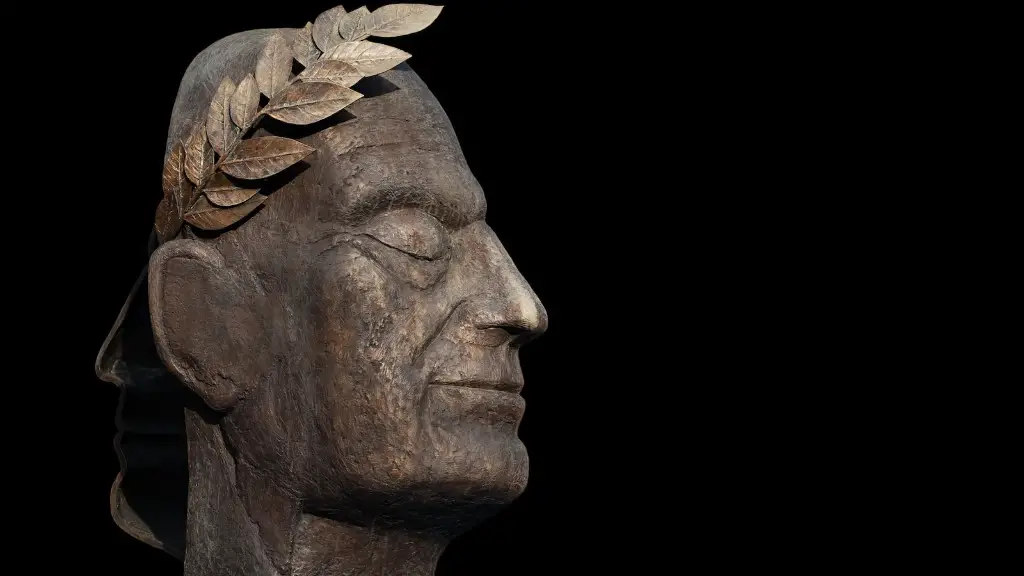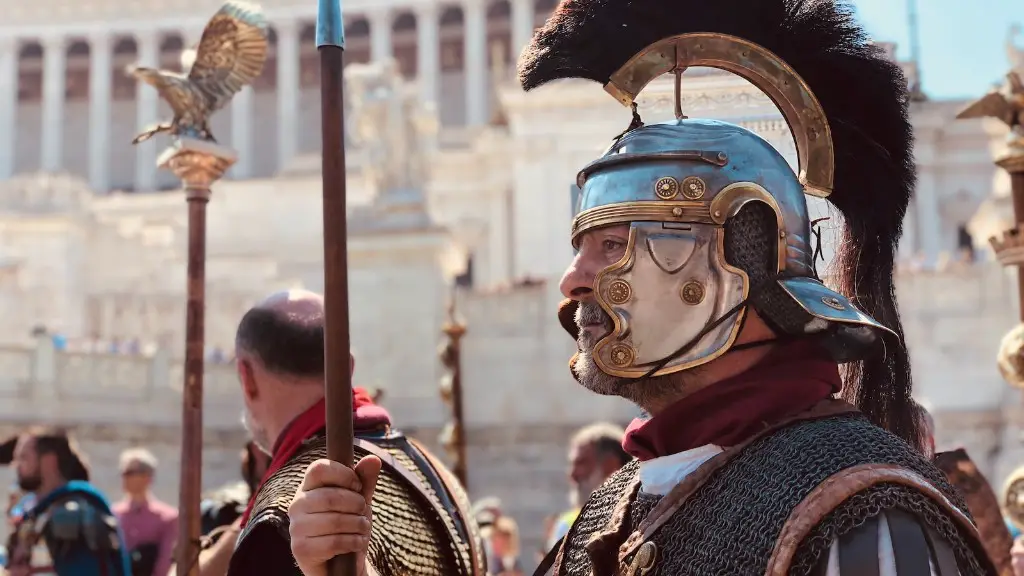The art of marble sculpture flourished in ancient Rome. Skilled artisans carved this durable material into a wide variety of forms, from life-size statues to delicate figurines. Roman marble sculptures were often brightly painted, and many have since lost their original coloration.
Marble sculpture in ancient Rome was a highly laborious and time-consuming process. First, the raw marble had to be extracted from the quarry. Then, it was roughly hewn into shape with a hammer and chisel. After that, the marble was transported to Rome, where it was finished by a team of skilled sculptors. The finished product was usually a life-size or larger-than-life statue of a person or deity.
How did the Romans sculpt marble statues?
Hammer and point work are common techniques used to create statues since early Roman times and even as far back as ancient Greek sculptors from c 650 BC. This technique involves holding the chisel against the stone and hitting it with a hammer as hard as possible.
White marble was prized by the ancient Romans for its beautiful translucency and ability to take finely carved details. A vast array of other colored marbles were also quarried from all over the Roman world to create numerous statues with beautiful colors.
How did the Romans carve marble
The technique involves using a hammer and a point to work stone. It is a very old technique, used by the ancient Greeks and Romans. It is still in use today, as it is very effective.
Roman artists were very skilled at creating sculptures out of marble, stone, and clay. They were also the first to use concrete to make sculptures, which were very popular at the time. Roman artists would often make many sculptures at the same time, similar to a factory.
How did they make marble statues so smooth?
Further smoothing of stone can be achieved using rasps or rifflers (metal tools with rough surfaces), or minerals such as sand or emery (stone grit). Polishes can then be applied to fine-grained stone after it has been abraded. Marble and alabaster are polished with pumice, producing a smooth, translucent and reflective surface.
The ancient builders and sculptors found that rubbing sand, grit, or other stones on marble would grind and smooth it. This process is called abrasion and it is still used today to finish marble surfaces.
Why is marble good for sculptures?
Sculptors like marble for a variety of reasons. Firstly, it is relatively soft and easy to work when first quarried. This means that sculptors can quickly and easily give the marble the desired shape. Secondly, marble becomes extremely hard and dense with age. This makes it the perfect material for creating sculptures that will last for many years. Finally, marble is available in a variety of shades and patterns. This means that sculptors can create unique and interesting sculptures that will stand out from the crowd.
Roman sculpture is characterized by its realism and the skillful use of perspective for dramatic effect. As with Greek sculpture, the Romans worked stone, precious metals, glass and terracotta but favoured bronze and marble above all else for their finest work. However, as metal has always been in high demand for re-use, most of the surviving examples of Roman sculpture are in marble.
Roman sculptors were masters at conveying the human form in a lifelike way and at creating a sense of movement and action. They also used carefully calculated perspective to create an illusion of depth and distance. This allowed them to create powerful visual effects that could communicate a message or convey a particular emotion.
Roman sculpture was used to communicate a wide range of messages, from the grandiose and idealized images of gods and emperors, to the more realistic and down-to-earth portraits of everyday people. Whether depicting the human form in all its glory or capturing a moment of action or pathos, Roman sculpture is some of the most impressive and moving artwork from the ancient world.
When was marble used for sculpture
Marble has been used for sculpture since the classical period in Greece (500 BCE to 323 BCE), when its natural properties allowed for the realistic portrayal of the human form in statue form. Over time, the chiseling techniques used to sculpt marble have been refined, with many of the innovations being exported to Ancient Rome.
Marble is a metamorphic rock that is formed when limestone is subjected to high temperatures and pressures. This process can take place over millions of years, and it is these conditions that give marble its unique properties. Marble is relatively soft when first quarried, which makes it easy to work with for artists. It can also be polished to a high shine, making it a popular material for sculptures and other decorative objects.
How were Greek marble sculptures made?
Marble was a popular material for sculpture in the ancient world. It was quarried using bow drills and wooden wedges soaked in water to break away workable blocks. Generally, larger figures were not produced from a single piece of marble, but important additions such as arms were sculpted separately and fixed to the main body with dowels.
There is evidence that the ancient Greeks and Romans enjoyed playing marbles. Early games used balls made of stone such as marble, hence the name. Glass marbles were called steelies. Clay marbles were called commoneys.
What was Rome’s style of sculpture
In Greek and Roman sculpture, two retrospective styles predominate: archaistic and classicizing. Archaistic, the most common retrospective style in Greek and Roman sculpture, refers to works of art that date after 480 BC but share stylistic affinities with works of the Greek Archaic period (ca. 650-480 BC). Classicizing, on the other hand, denotes works of art from the late Hellenistic period (ca.323-31 BC) that recall the style of earlier, Classical Greek art (ca. 480-323 BC).
Ancient Rome was a mass producer of sculptures made from bronze. The lost wax technique was used to create a clay mold from which the bronze statue was then made. These statues were often embellished with silver or stone eyes, teeth and nails, copper eyelashes and nipples.
Where did the Romans get marble from?
Rome’s closest source of marble is Carrara in Tuscany. The quarries in Carrara have provided the blocks for Michelangelo’s David and Pietà and continue to produce snow-white stone for artists and architects around the world.
The technique involves making small holes in the plaster model at specific points, then using a device called a pointing machine to make corresponding holes in the stone block. The holes are then filled with dowels or metal rods, which act as a guide for the stone carver.
Do marble statues break easily
Marble is a beautiful natural stone that is perfect for sculptures.However, it can easily break if not handled carefully.Take care when handling marble to avoid any accidents.
Marble is a strong material, but it is not impervious to damage from burial, atmospheric attack, and incompetent restoration. The implications of its susceptibility become complex when considering works of art.
Conclusion
The first step in sculpting marble is to find a suitable piece of raw marble. After the marble has been found, it is then cut into the desired shape. Next, the sculptor uses a hammer and chisel to begin carving out the basic form of the sculpture. Once the basic form has been carved, the sculptor then begins to add the finer details. The final step is to polish the sculpture to create a smooth, glossy finish.
The ancient Romans used a variety of techniques to sculpt marble. The most common technique was to hammer a chisel into the stone to create the desired shape.





